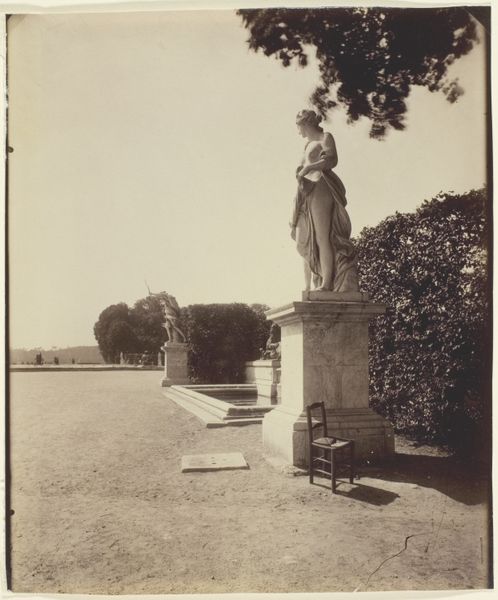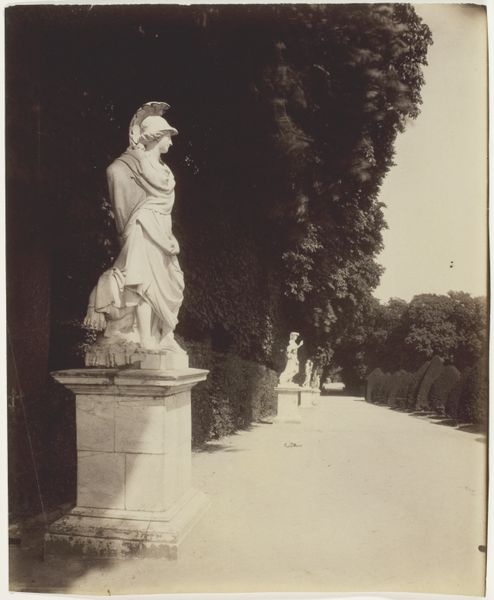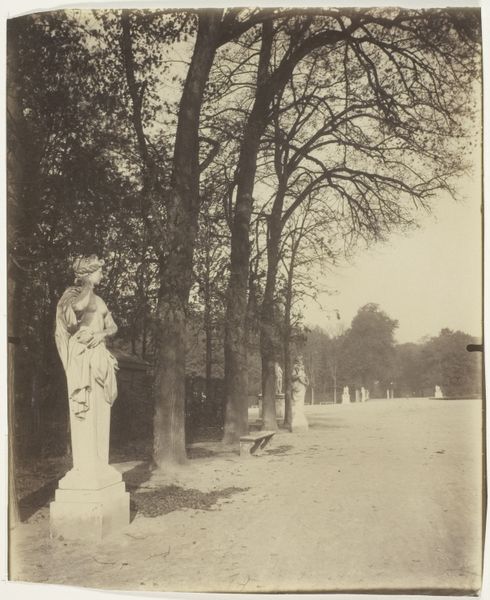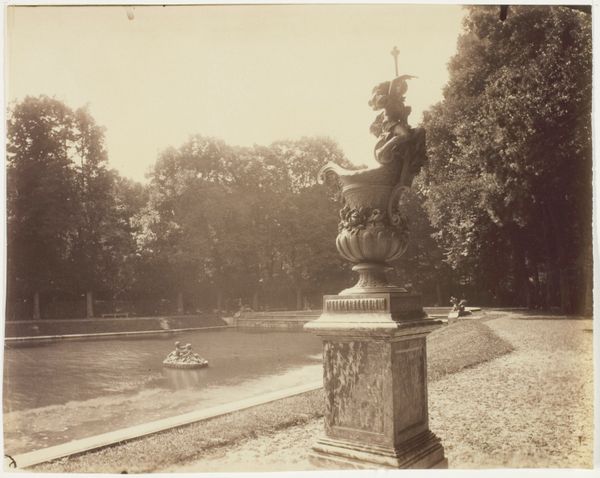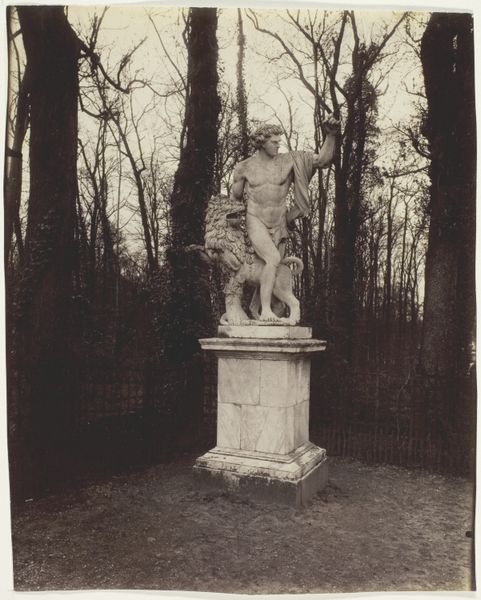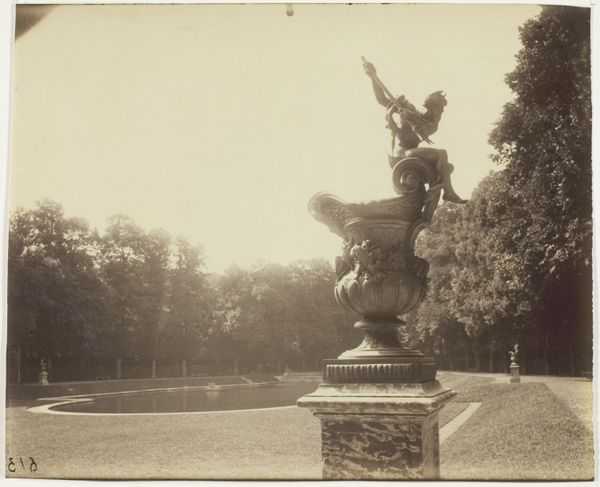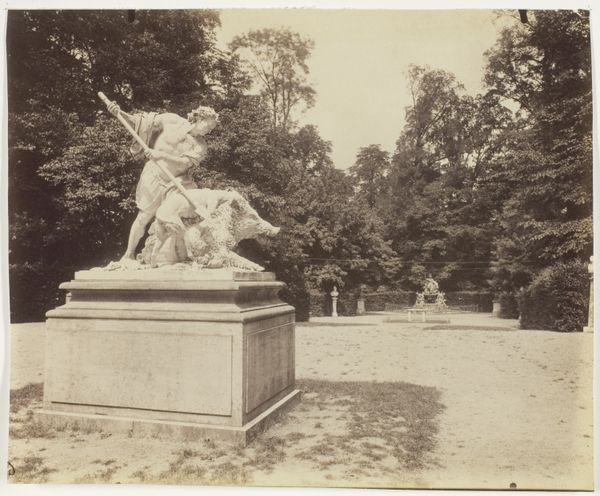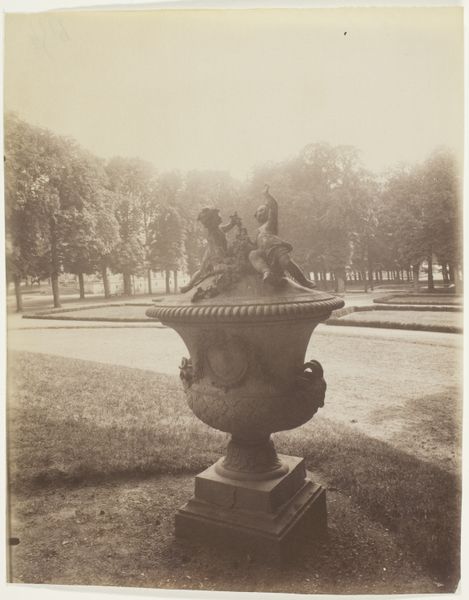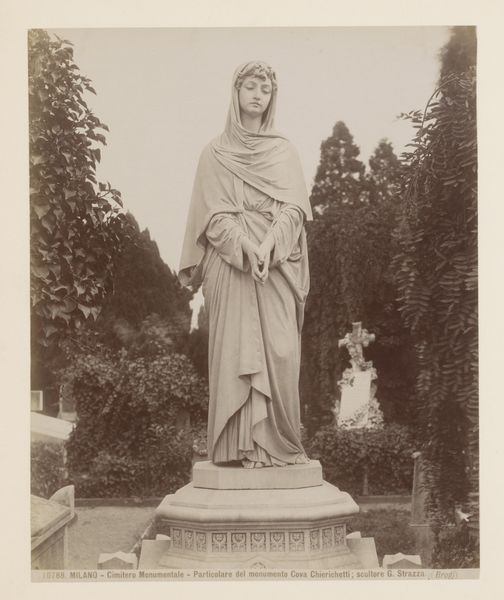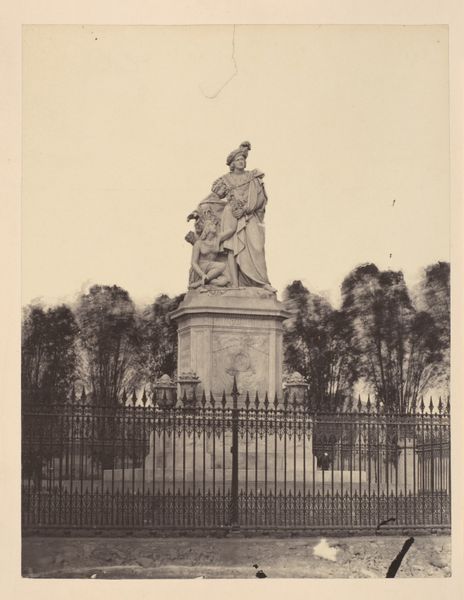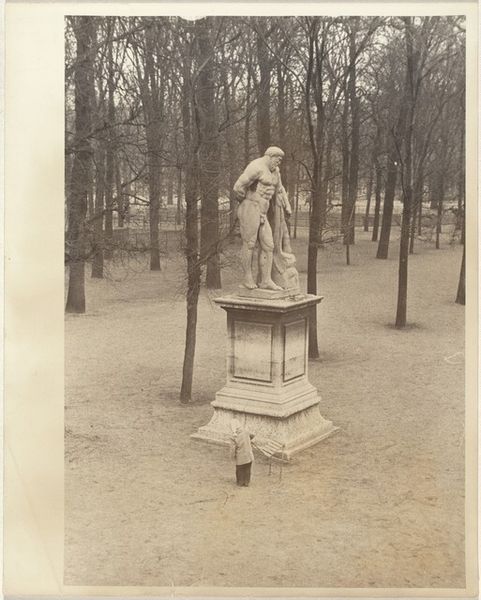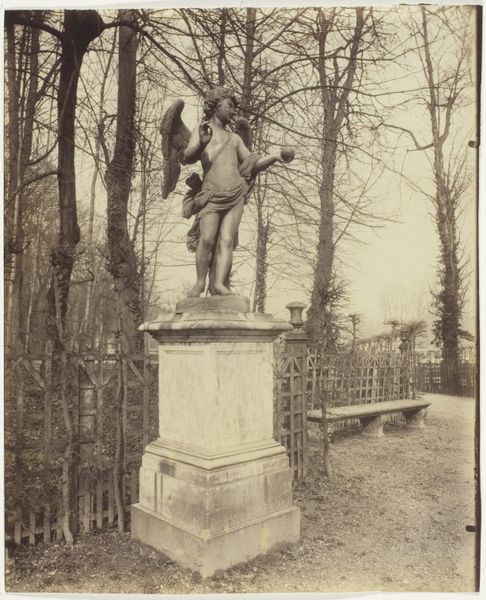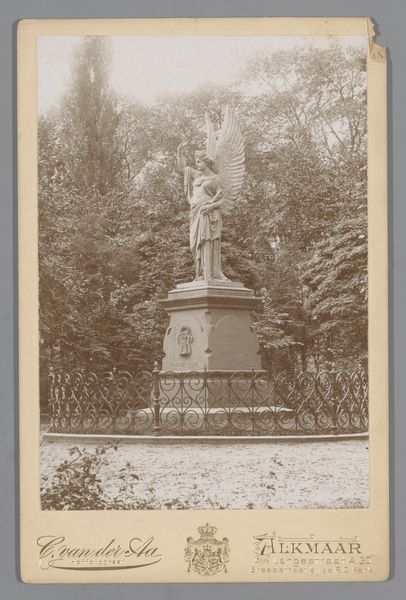
silver, print, photography, sculpture, gelatin-silver-print
#
print photography
#
silver
#
neoclassicism
# print
#
landscape
#
archive photography
#
photography
#
historical photography
#
sculpture
#
gelatin-silver-print
#
france
#
19th century
Dimensions: 21.7 × 17.6 cm (image); 21.7 × 17.8 cm (paper)
Copyright: Public Domain
Editor: Here we have Eugène Atget's "Versailles, L'Eau par Legras," taken in 1901. It's a gelatin-silver print. I’m really drawn to its muted tones, which give the whole scene this timeless, almost melancholic feeling. It seems like the statues are frozen in their own little world. What do you make of it? Curator: It's fascinating how Atget chose to capture Versailles, isn't it? He was documenting a changing Paris and its surroundings. This image speaks volumes about the public perception and role of historical imagery. Versailles, a symbol of royal power, was being opened up, photographed, and made accessible to the public. Editor: So, it’s about more than just capturing the aesthetic beauty? Curator: Precisely. The statues themselves—classic subjects—are placed within a specific political and social context. What does it mean to document these symbols of aristocracy at a time when republican ideals were taking hold? Who has access to this image, and what stories does it now tell? Editor: I see what you mean. It makes you think about who gets to control the narrative and how these grand spaces are being reshaped for a new era. The way Atget frames the composition invites us to contemplate this evolving relationship between the past and present, and the socio-political forces which shape it. It is beautiful to think of photography as archive and agent. Curator: Exactly. And his work challenges us to examine the public role of art – who is it for, what does it represent, and what power does it hold. How do you think later artists and institutions used images like this? Editor: Now, looking at this image again, knowing the cultural backdrop makes me see beyond the simple beauty. Thanks to you, I understand better how context changes my understanding of what art means.
Comments
No comments
Be the first to comment and join the conversation on the ultimate creative platform.
